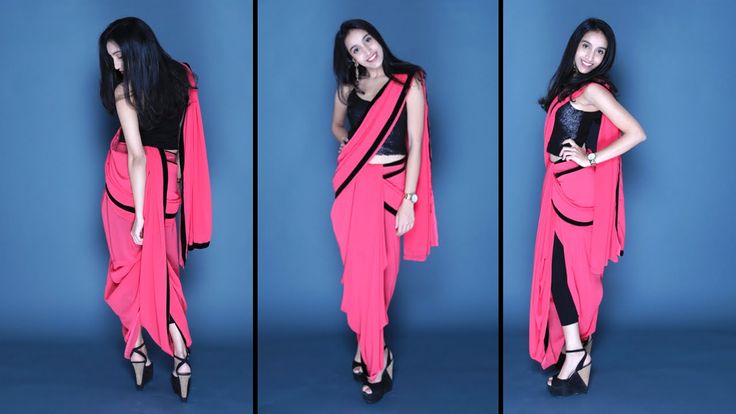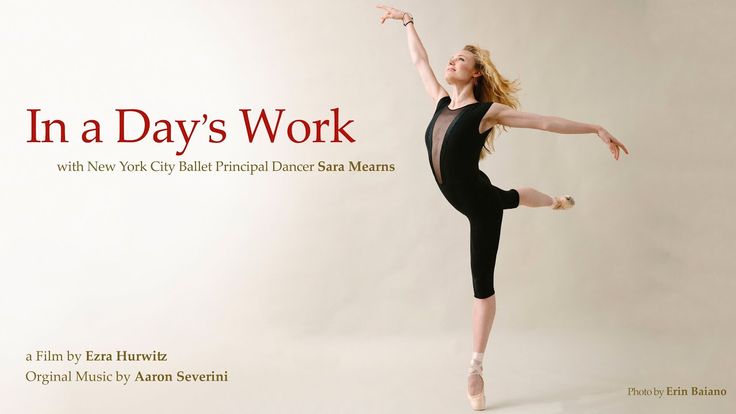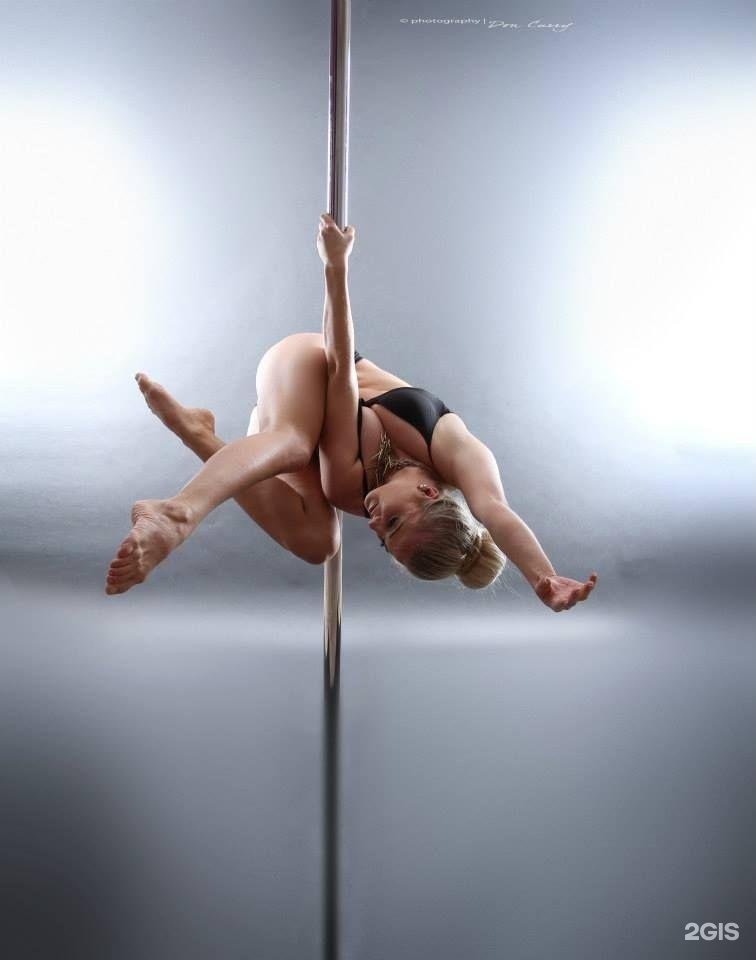How to wear dhoti saree for dance
Nauvari Saree - 3 Ways of Maharashtrian Saree Draping
Nauvari saree is from Maharashtra in India, it’s a traditional saree that actually is known for its Long Length of 9 yards (8.23 meters). A normal saree is 5.5 meters or 6 meters while a Nauvari saree is or more than 8 meters. During traditional events like festivals or weddings, women love to wear Maharashtrian saree styles. We will show how a Navwari saree draping can be done in 3 different styles. Using 3 styles of saree fabrics or saree types.
Watch How to Wear a Nauvari Saree
The Saree has a basic style known as a Kashta (the tuck-in of the border at the back waist). This style was worn by warrior women during Maratha’s rule, as women had to ride horses and fight with spears. One of the Eras of Maratha, rulers of the Peshwas had the influence in the name of the Peshwai Saree.
The Kashta Saree – Nauvari Saree Draping
Although all three saree styles have the Kashta, we will be explaining ways of making a kashta of a saree. In this style, we will show the normal kashta which is easy to make. Women war the kashta saree draping to wars and during Maratha rule as they needed to go fishing or horse riding and needed comfort. The Cotton saree is perfect for Kashta drape, which needs a firm texture and also is breathable fabric work day-to-day wear, and for festive wear, women wore silk fabrics. Below is the Video of a Nauvari saree draping Tutorial of Kashta Saree Look.
How to Wear Kasta Cotton Saree – Lavani Saree
The saree to be used will be a cotton saree in any color with a golden weave border so when we will wear the kashta saree style it will be visible. This saree style is also known as the Lavani Saree or Nauvari Lavani Saree style. Before you start wearing a sari, put on the blouse and tights which come till calf or knee-length.
Step by Step Kashta Saree Draping Guide
- To wear a kashta saree, we will make pleats on pallu and pin them from 1.2 m to 1 m in length.
- Take the inner section of the saree, wrap it around your waist at back and bring the end from front to right side, tie a firm knot of the saree here. Take the Pallu pleats and drape from left to back and again to the front side. Place at the left shoulder and pin at the blouse roughly.
- Adjust the front drape border here and then make a wrap-around, tuck roughly on the left side. You will have a front loop which is for skirt pleats.
- Take the saree lower edge of the middle section and pull to the front, this will make a dhoti or wrap effect on both legs from behind. Now tuck this from the bottom of the knotted fabric roughly, we will need this for the kela (a word used for the covering of pleats at the waist). Make lower skirt pleats that open on the right side instead of the left side. Leave the first two top pleats on the left side.
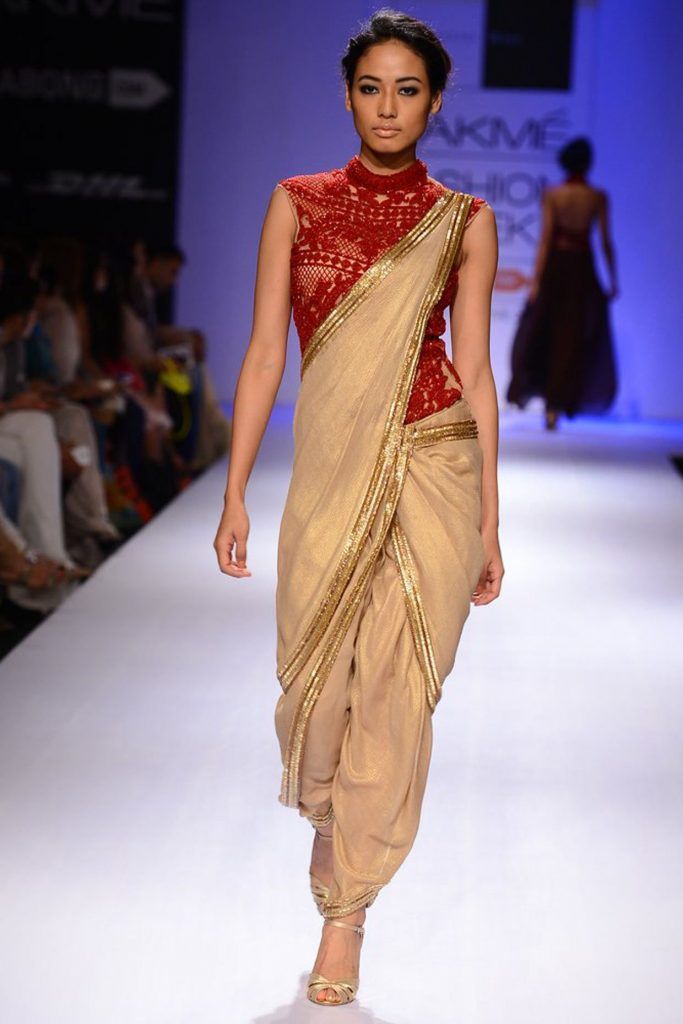
- Align all pleats together and then wrap them from the big pleat fabric on left, covering all pleats till knee-length neatly. Now hold pleats at the top edge and fold them once in a bundle, use the waist border to cover it, so it stays in a bundle which is your kela. Then again take the fabric which was pulled from back to front and cover the kela again and tuck the rest in the waistline.
- Now split the lower pleats into two sides. Hold the lower edge from this section and pull it back between your legs for the Kashta. Pull it tight enough, so you have at least half a meter of fabric at the lower back knee level.
- Fold the border part, so it turns up the right side, and make pleats on the folded part. The border will face the left side, use pins to secure, and tuck it in the back waistline.
- Now adjust the front drape pleats where your outer border will be in the cowl covering the front mid-waist section. The pallu will not be aligned at the width section.
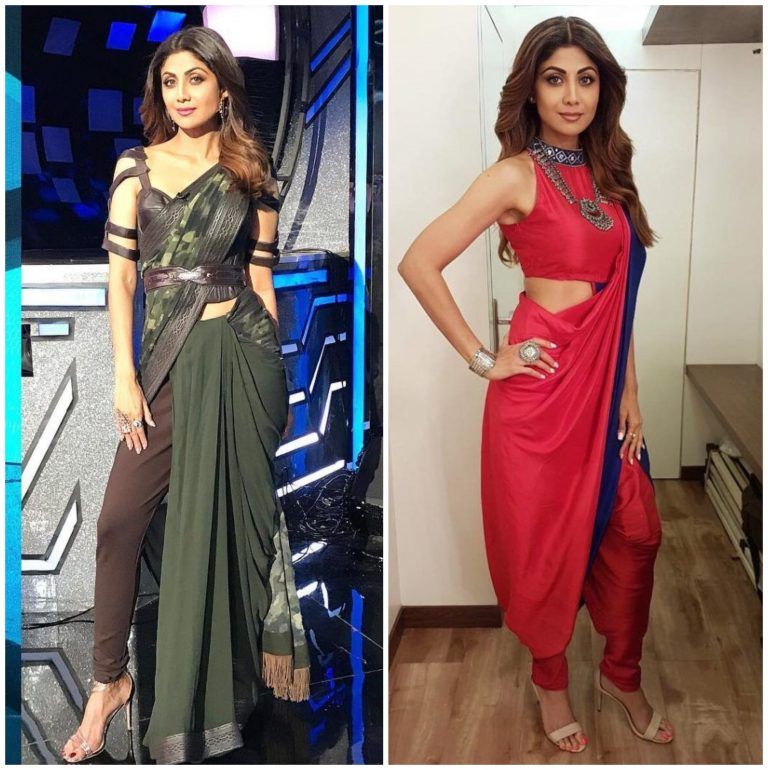
Variations of Kashta Styles in Saree Draping
- The Single Kashta Border Drape – has one border visible at the backside, just like done in the guide above.
- The Double Kashta Border Drape – There are two borders visible at back. We pull the edge and hold it from the top, make both side borders visible and tuck in the back.
- Single Kashta border with no pleats – Similar to the first style but the kashta is pulled and tucked without pleating at the fold.
Also Read, Unique Styles of Saree Draping
Brahmini Nauvari Saree Draping
Normally these sarees are worn in silk, cotton, or cotton silk. The saree is drape just like the style as Single Kashta tuck behind. We have seen big Bollywood celebrities also wear this style in movies like Bajirao Mastani. The Pinga Dance saree draping is the best example of this style. The only difference is that the saree has a different step after tucking the kashta. The Front drape has a big cowl look and a side tucked border look.
Step by Step Brahmin Nauvari Draping in Silk Saree
- Begin draping this saree like the Kashta saree drape, steps given above. Do all steps till we make the kela and cover the pleats.
- The next step is to split the pleats from below, we will be keeping two extra pleats on the right side. This will be a point to pull saree back for kashta.
- Now tuck in the Kashta in the same way written in the above guide.
- Then pick the most inner border towards your inner leg from the right side, pull it tight till your thigh level. This will create a big cowl in front.
- Use a sopari to put it through the edge of your border pleat. Tie a rubber band to secure this ball in a saree. Tuck this part in your left side of the waist to secure the pleat from falling off.
- Next, adjust your bodice pleats just like in all Maharashtrian Nauvari saree draping.
Step by Step Brahmin Nauvari Draping in Georgette Saree
Most nauvari sarees are traditional styles, yet today the dhoti saree trend is a huge hype. Women like to carry this style of Saree draping. We can use a longer georgette nauvari saree with a solid thin border for this draping. Just like the Sonam Kapoor Dhoti Saree, we can give an extra different look with a simple step variation in Brahmin Nauvari Saree Style.
Women like to carry this style of Saree draping. We can use a longer georgette nauvari saree with a solid thin border for this draping. Just like the Sonam Kapoor Dhoti Saree, we can give an extra different look with a simple step variation in Brahmin Nauvari Saree Style.
- Repeat all steps of a Brahmini Nauvari saree, till tucking of the right side cowl drape.
- Here we will not use the Sopari and tuck in waistline, but we will be making 2-3 pleats or more on this folded pleat we picked up.
- Now tuck this in the front side but towards the left side of the waist. Use a safety pin to secure this border and pleats to stay here on the waist.
- As the Georgette saree is thinner the pleats will create a good effect of cowl and pleats in front.
Peshwai Nauvari Saree Draping
Peshwai Nauvari saree is a very popular saree draping style in silk saree. The style is also an influence from the Maratha Peshwas which ruled during that era. The only difference is the use of silk in contrast to borders is in a zigzag peshvai saree style. We can also see some women draping this style for Marathi weddings.
We can also see some women draping this style for Marathi weddings.
Step by Step Peshvai Saree Draping
- The basic drape is as usual until we make the kela. Now repeat the same way of lower pleat partition like in Brahmin saree draping.
- Make the kashta, the peshvai saree has only a single border kashta at the back which faces the left side. Now come to the front side to drape the border from the left side.
- Repeat the same step of tucking in sopari/ball in the waistline. Now we will make the zigzag border effect.
- Pull up a pleat under the first triangular border that we achieved by tucking the ball in the waistline. Place pleat fold under the border creating a triangular shape in zigzag and pin it with a safety pin.
- Keep doing this 5 or 6 times, you will have the zigzag effect till the floor-length. This zigzag Peshwari saree draping can be understood in the Video Tutorial. Watch the Video to Learn.
- Continue with arranging the bodice drape and shoulder pleats.

Simple Marathi Saree draping
Draping a Nauwari saree involves adjusting and making the messy front drape look as neat as possible. Yet today we also see ladies wearing a normal saree of 5.5 or 6 meters in a kashta saree style. We have a video on the Traditional Maharashtrian Dhoti Style Saree.
Today women wear the Marathi Saree draping style is by just adding a back tuck and without the front kela (Bundle of pleats at the waist). Some known celebrities also wear the simple Marathi Nauvari Saree like Sridevi in Nauvari saree and Rani Mukherji for their movie promo and festivals.
So those were the three different ways to drape a nauvari saree that We thought to be appropriate for Maharashtrian weddings or any other event. The one you can get right now from our site is one by the G3Fashion blogger who makes the Nauvari draping style simple to wear and style.
26 Ideas On How to Wear Pants Style Saree?
How to wear Pant Style Saree? A new way to drape Saree with elegance is here and this trend is catching on like wildfire.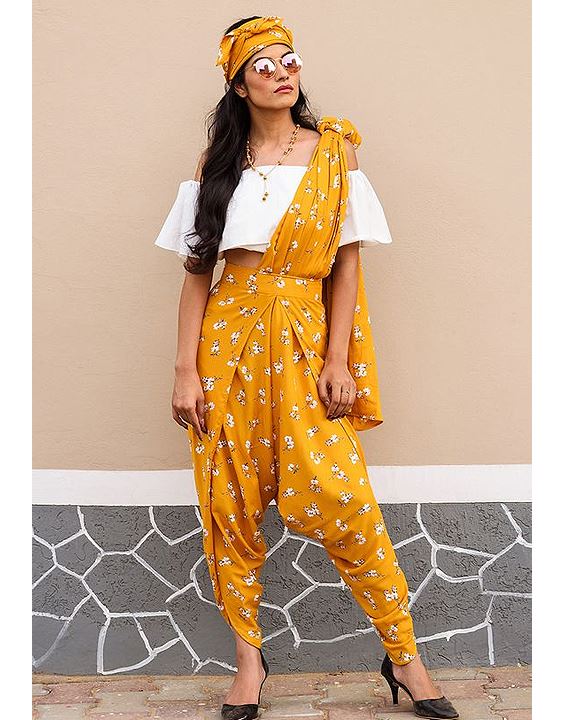 Girls around India, Pakistan, and Bangladesh are always in search of new ways to carry saree and if you like some modern twist to this traditional wear you should definitely try saree pants.
Girls around India, Pakistan, and Bangladesh are always in search of new ways to carry saree and if you like some modern twist to this traditional wear you should definitely try saree pants.
There are multiple cuts of pants that you can try effectively with saree like flared pants, churidaars, dhoti pants etc. Saree pants are an ideal and comfortable outfit for both weddings and parties. So if you are ready to stun and look absolutely feminine and sexy while doing so, we have collected 25 unique ways in which you can easily flaunt saree pants this season.
Starting off with my personal favorite look, a sequin top with a simple silk saree and matching solid colored pants. This is such a simple yet elegant look that can easily be carried for parties and even wedding functions. Here are some more tips on styling silk sarees.
We all love saree, so why not wear some pant style saree for great contemporary vibes? An attire that can never go out of fashion is here now to blow your mind even further as it gets paired with pants, and you can choose your comfort level for any multiple styles of pants. You can wear saree pants with cropped blouses as well as long shirt style blouses depending on the season. Get your heels on and bring out your most extraordinary piece of jewelry to flaunt with this great outfit. Here are 30 New Saree Blouse Designs 2019 You Must Try.
You can wear saree pants with cropped blouses as well as long shirt style blouses depending on the season. Get your heels on and bring out your most extraordinary piece of jewelry to flaunt with this great outfit. Here are 30 New Saree Blouse Designs 2019 You Must Try.
Via
24. Silk Printed Saree
A beautiful solid border on a silk saree is to die for. Draping a silk border saree with micro floral pattern on the body goes perfectly well with an embroidered blouse for weddings and parties. It is time to combine the lethal combination of a magenta saree with royal blue zari work blouse and trouser. Wear this outfit with glam heels and you will be ready to turn heads in your direction!
Via
23. Dhoti Pants Saree
Dhoti pants Saree is not only a very traditional outfit but also super comfortable for days that you don’t want to just handle the hassle of tacky and difficult clothes. The loose silhouette of the dhoti pants will complement your saree and you can wear a plain saree with a gorgeous metallic sequined blouse with embellishments on the back.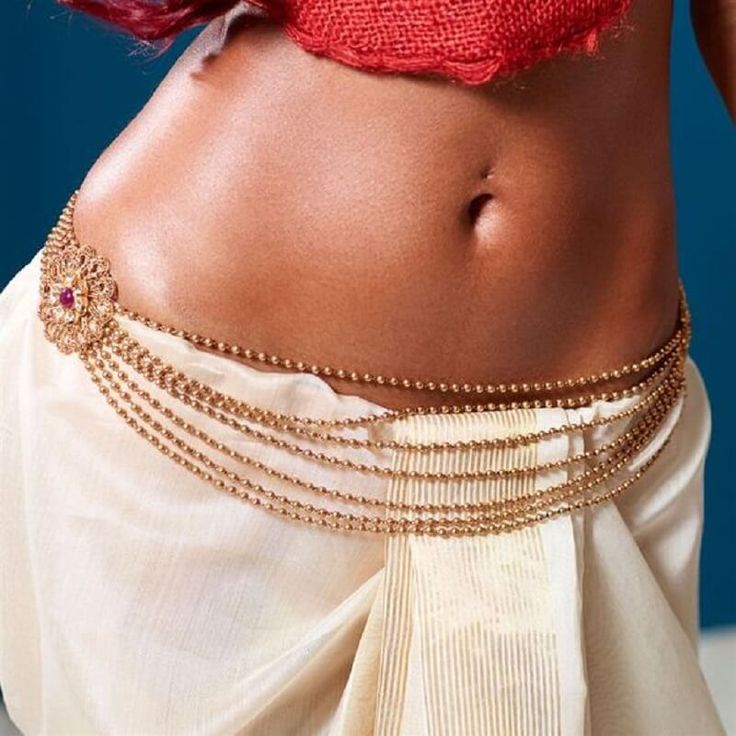
Via
22. Churidaar Pants with Saree
Opulence starts with a full banarsi saree in soft color with floral spatter and a delicate border. Whichever color you choose, this looks stuns everyone and the pleats game is strong with this one. To make it even more regal, you know can wear this look with a banarsi churidaar in a subtle shade of gold. Tie a belt above the saree to secure your pallu and to enhance the hourglass shape. Adaab in your way to an event and be the queen of traditional attires with a twist.
Via
21. Plus Size Saree Pants
For those of us that feel conscious about our figure, introducing the Palazzo saree. For a plus size woman, the concept of tight and fitted clothing items can be quite daunting and you might even feel the need to stay away from saree due to the same reason. Not anymore!! You can wear a quarter sleeves plain blouse with a slim print saree and palazzo combination so that you can dance the night away without any inhibition in mind.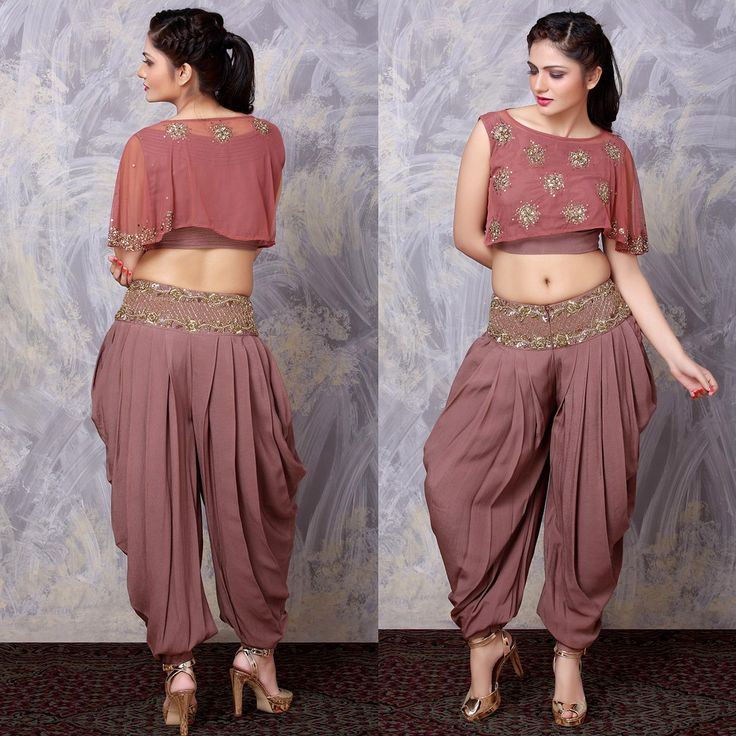 Stick towards darker shades as they appear more flattering on plus size women.
Stick towards darker shades as they appear more flattering on plus size women.
Via
20. Traditional Wedding Attire
If you are in the middle of a tiring wedding season and have used up all your creative ideas to wear something modern, with almost no effort, you can try the saree pant attire. This outfit is not only very flattering on every body structure but hardly any hassle is required to wear it with ease. You can pair up your gold banarsi pajama with a glamorous saree to add a new touch to the whole look. Here are 20 Cute Celebrities Inspired Hairstyles to Wear With Saree.
Via
19. How to Wear Jeans with Saree
Want to appear festive but don’t want to lose your girl next door spirit? Well, you can get the best of both the worlds with this modish take on saree pants. Take a Georgette saree with the right fall and wear it with a khaki belt with a large buckle at the waist and wear it with denim and a long blouse. You can even get away with flats with this casual look.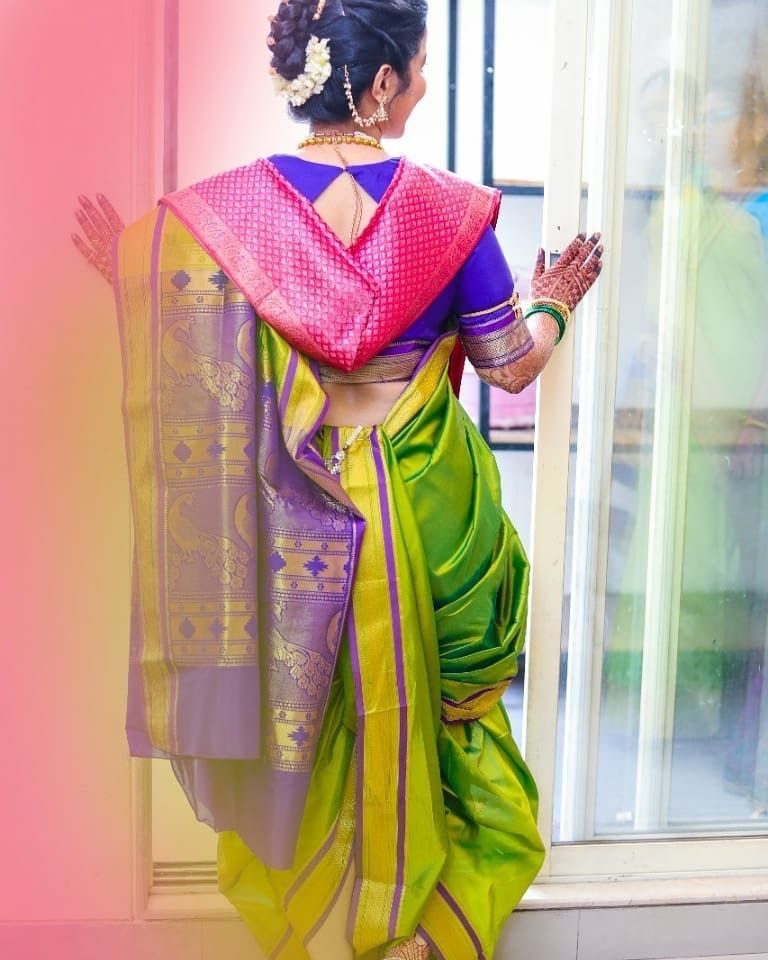 Wear some chunky bracelets or karay to add charm.
Wear some chunky bracelets or karay to add charm.
Via
18. Celebrity Style
Celebrities have been very creative with the saree pant outfits and you can see all sort of variations. From fancy cut blouses to beautifully printed sarees to creative pants, we have seen it all. You can take a cue what variations you can successfully carry with these suggestions.
Via
17. Bold in Black
Whether you have to attend an event in winter or summer, or at night or during the daytime, black is the perfect color. It is not only the most alluring color but also incredibly flattering and easy to carry. It goes well with all skin tones as well and you don’t need to overdo makeup or accessories as black saree pant outfit is enough to make you appear mesmerizing.
16. Mehndi Bride Outfit
For an avant-garde Indian or Pakistani mehndi bride, you do want to wear the traditional yellow color but want a modern twist to the whole outfit. If you are still confused about what to wear on your mehndi or mayun event, go for Saree pant outfit in yellow, orange or green.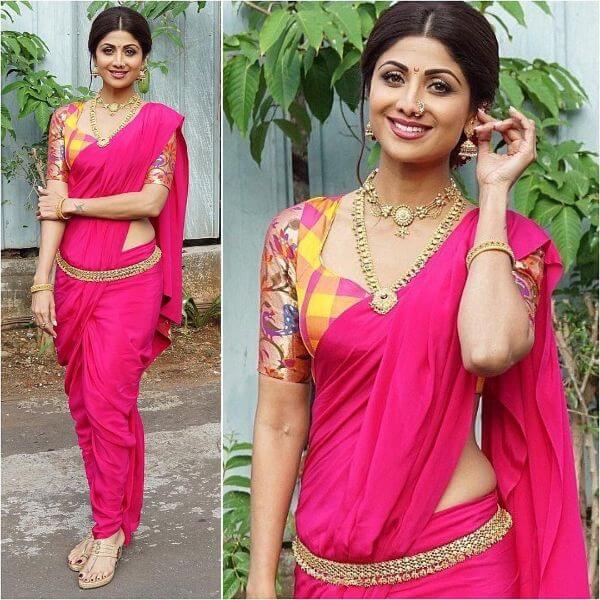 Go for a beautiful blouse with delicate embroidery and a gold gota work ribbon on the edges of Saree for a minimalist bridal look. Don’t forget the classic khussa and anklet combination with this outfit.
Go for a beautiful blouse with delicate embroidery and a gold gota work ribbon on the edges of Saree for a minimalist bridal look. Don’t forget the classic khussa and anklet combination with this outfit.
Via
15. How to Drape Embroidered Sari
When going for embroidered saree, keep the border properly pleated and tied neatly on the shoulder. The embroidery on the border should be delicate and sophisticated instead of being too heavy to give you a nice look. A high neck blouse and gold pajama pant will look awesome with this saree.
Via
14. Wearing Belt with Saree
Want to assure that your dress will stay at its place along with making a great fashion statement? Wear an exquisite big and bold silk belt or a lean metallic belt with your outfit that you can tie at the front. Go bold with your jewelry and keep the saree and pants relatively plain to bring out the belted look.
Via
Via
13. Cape Style Saree
Formal and trendy in look, cape style blouse with off-shoulder sleeves and saree pants combination is sassy as well as unique. Pastel tones and subtle shades are perfect for saree pant with cape style blouse. You can choose a sheer net fabric for the blouse or a denser looking fabric with beadwork on it. Wearing a cropped cape blouse with loose-fitting pants will also give you an elongated silhouette.
Pastel tones and subtle shades are perfect for saree pant with cape style blouse. You can choose a sheer net fabric for the blouse or a denser looking fabric with beadwork on it. Wearing a cropped cape blouse with loose-fitting pants will also give you an elongated silhouette.
Via
12. Contrasting Shades
Shift gears with two contrasting striking shades for saree pants. Lighter shades of saree in pastel colors with a darker tone blouse and pant will be sheer sophistication. This look is great for any party wear or low key event you have to attend. Wear your hear in curls for great style.
Via
11. Flared Pants Saree
These 70s inspired fashion item flared or bell-bottom pant goes amazingly well with saree. Pay attention to the fabric of the saree and pants because this attire needs impeccable fall and pleats. You can choose a bell-bottom style pant or an open flared flapper style pant according to your personal choice. Beautiful precious stonework or beaded blouses will increase the overall beauty of this look.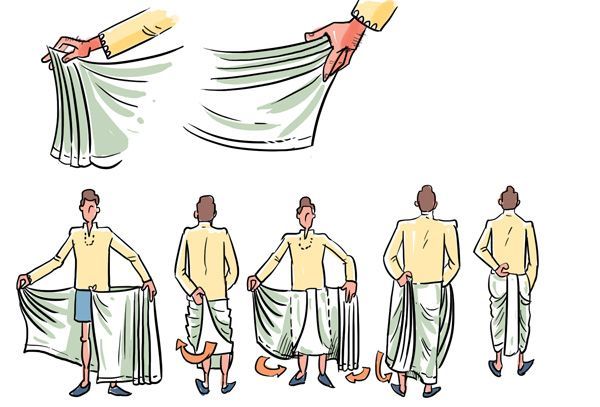
Via
10. Modern Saree Styles
Modern saree styles are taking over the fashion world and now plain old saree drapes are so out. Varying from lehenga saree to now pants saree you have a multitude of options available. For summer wear if you need a modern outfit for party wear or weddings, you now have the option of Capri saree ensemble. A low Capri cut with high heels and saree will give you a refined and slim touch and wearing long earrings will make you very chic. Here are Indian Ethnic Wear Sarees In Modern Day fashion.
Via
9. Retro Style Outfit
Step ahead in a retro-inspired saree pant outfit with polka dots whether it is in the traditional black and white or 80s inspired brown and beige color theme. You can add a bit of a twist and wear stripes along with this print. Whether you go for a micro or macro print saree, you will surely be the center of attention!
Via
8. Bridal Shower Outfit
For bridal showers, a desi girl needs some inspiration to try something new yet feminine and pretty at the same time. In case you are not bound by the dress code in the event and can wear whatever you want to, we will like to suggest sweet and sumptuous ruffled edges floral saree with a pastel-colored blouse and pants. you can get creative with the blouse and try something different while keeping it simple.
In case you are not bound by the dress code in the event and can wear whatever you want to, we will like to suggest sweet and sumptuous ruffled edges floral saree with a pastel-colored blouse and pants. you can get creative with the blouse and try something different while keeping it simple.
Via
7. Tassels and Beadwork
Embellishments can add a lot to the saree pant outfit and tassels and beadwork can be pretty enchanting. If you want to go for something trendy, go with floral or butterfly print applique work blouse that will also give you that 3D look. make your saree more interesting with tassels and an off-shoulder, boat-shaped blouse. Complete the look with some gorgeous black heels.
Via
6. Metallic Saree Drape
Metallic saree pant outfit can be best saved for a fun evening whether it’s a date night or any event that you have to attend. Casually tie a knot with the pallu of the saree at the waist and you are good to go.
5. Party Outfit
Chevron print has been recently very popular and its time you wear a saree pant in this print for parties. A slightly long sleeves blouse with matching pants and plain black georgette saree is the perfect fit for any nighttime event.
A slightly long sleeves blouse with matching pants and plain black georgette saree is the perfect fit for any nighttime event.
Via
4. Color Block Saree Pants
Why not go for gold lace embellished geometric print blouse this season? It can build up an interesting look even with a plain saree. To make it more formal and elegant, go for double-shaded saree and single-colored fitted pants.
Via
3. Hairstyles to Try with Saree Pants
With saree pants, you need to go with traditional hairstyles with flowers inserted with help of pins. Jasmine garlands go pretty well with buns and this way the saree pants will be the center of attention.
Via
However, if you love to let your hair loose, it is wise to go with side braids and twisted knots, and then let the remaining hair lie loose.
Via
2. Footwear to Wear with Saree Pant
Heels are the best options to try with a saree because you need that extra elongation look to make the saree pants stand out. You can either go with black heels or with metallic gold ones. Some people also prefer transparent heels to wear with saree pants. However, if you find long pencil heels uncomfortable then go for other options like platform heels.
You can either go with black heels or with metallic gold ones. Some people also prefer transparent heels to wear with saree pants. However, if you find long pencil heels uncomfortable then go for other options like platform heels.
Via
1. Accessories to Wear with Saree Pants
While carrying saree pants, you need to keep a medium size clutch that is easy to carry and have the space for the essential makeup items and your mobile phone. Choose a clutch that is of a similar shade as your saree pants outfit.
Wear some gorgeous indigenous or antique neckpieces like a kundan set or a pearl layered necklace. You can go crazy with earrings either wearing chandbali or traditional jhumkas. Don’t forget to add a nice bindiya or tikaa on your forehead as it looks very appealing with saree pant ensemble.
Via
12 ways of draping. Schemes and instructions
How to sew an Indian dance costume with your own hands: for a woman (girl)
A classic female Indian dance costume consists of three items: 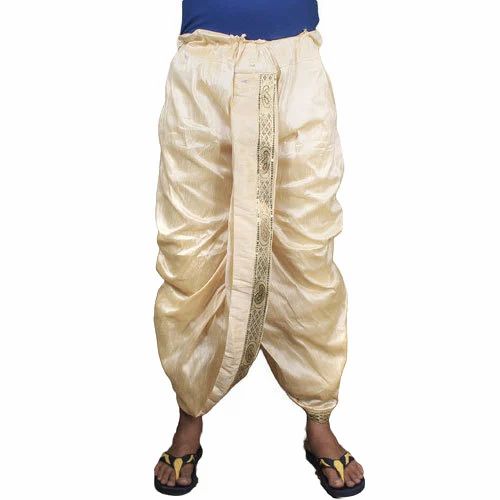
For sewing all components, you must use silk or cotton fabrics in bright colors with embroidery, appliqué, sequins and traditional oriental patterns. If a suitable material is not available, you can use any bright plain fabric and decorate the finished product yourself. We first take measurements and draw a sketch of the desired model on paper.
For classic trousers, use the pattern below. This model is the size for an adult woman. To sew a costume for a girl, you should adjust the size of the blanks.
Cut out the blanks, laying allowances of about 1.5-2 cm. Sweep the details or chop them with tailor's pins in the places of future seams. We carry out a side and step seam, insert an elastic band at the waist and on the cuffs, overcast the seams.
For a kameez or long tunic, use the basic pattern below. If necessary, you can add sleeves or other elements. When sewing a children's kameez, darts are not necessary. If not very loose fabric is used, additional overcasting is not required.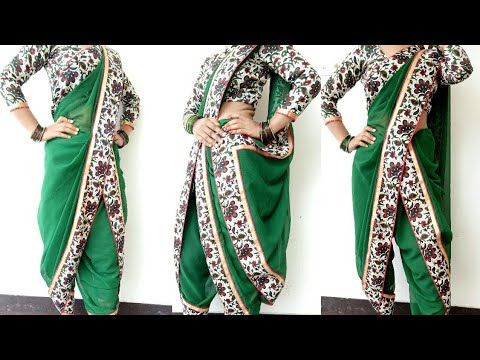
As a cape, you can use any long and wide translucent scarf that matches the color of the tunic and bloomers. For an adult dancer, the width of the cape should be about 2 meters, depending on her height and dimensions. To put on a cape, you need to fold it into an accordion and throw it over one shoulder, straightening the folds on the chest. The other end of the fabric should be folded into a tight bundle, wrapped around the waist and fastened on the left side. A dance costume with a cape on is shown in the photo below.
How to make a pattern of women's trousers with an elastic band without a side seam
Sometimes bloomers need to be replaced with a wide skirt. In some costumes, the skirt is worn over the trousers. For its sewing, you can use a smooth or corrugated translucent fabric. As a rule, the traditional “sun” style is used on an elastic band or a rigid belt. The lower part of the hem should end approximately at the level of the ankles.
How to wear a sari yourself
Time passes and everything changes, but the Egyptian pyramids, the sunset and the traditional dress of Indian women - the sari, which has won many admirers around the world, remain unchanged. What is the best way to dress and with what shoes and accessories to combine this ethnic clothing? Many ladies ask themselves the question: how to wear a saree? First of all, it is worth understanding what it is.
What is the best way to dress and with what shoes and accessories to combine this ethnic clothing? Many ladies ask themselves the question: how to wear a saree? First of all, it is worth understanding what it is.
What is a sari
Before learning how to wear a sari, or more precisely, how to tie and drape it, you need to understand what it is. After all, this is not just a dress, it is a kind of ancient cultural tradition for many Hindu or Pakistani women. But before putting on a sari, it must be taken into account that this is not just traditional women's clothing, but a special lifestyle. After all, Indian women wear it for centuries and their every movement is filled with grace and plasticity. Do not rush and make sudden movements.
Sari is a long fabric, 5 to 9 meters long, decorated with various ornaments, exquisite embroidery and rhinestones. Ordinary daily clothes are distinguished by calm colors. For holidays, silk or chiffon saris with embroidery or gems are suitable.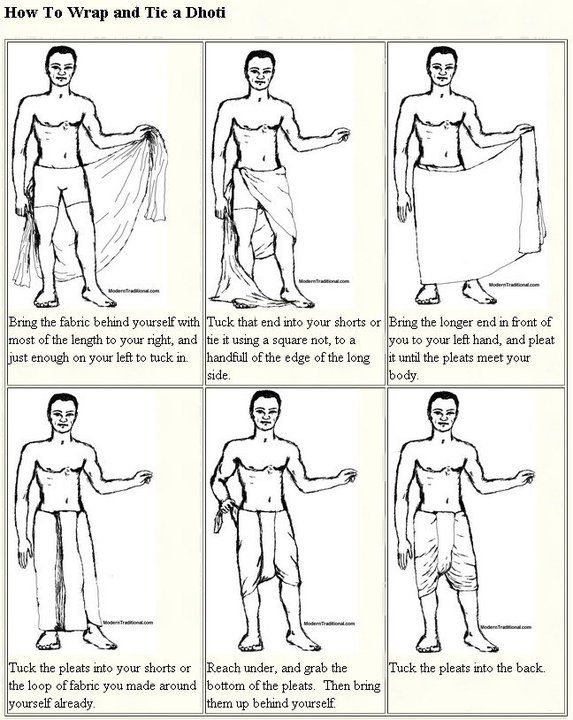
Equally important is the position of the pattern. For short women, it is better to prefer a vertical pattern that will visually stretch the figure
Ladies with curves can successfully combine a tight skirt and light fabric, which will add airiness and lightness.
Choice of skirt and choli
Wear a short-sleeved knitted or cotton choli top or plain blouse underneath. But at the same time, it is better that the cutout on it is not very deep. What is unacceptable, especially in India and Pakistan, is underwear peeking out from under clothes. The color of the blouse should be contrasting. If the sari is red, then the choli is better to choose green. Although for owners of magnificent forms, it is best to choose a tone-on-tone top with the main fabric.
A long skirt is worn under the sari, which serves as a base and matches the color of the fabric. It is better if it is on a soft elastic band and reaches the ankle, which will not restrict movement while walking.
With some skill, you can put on a sari in just a few minutes. Most importantly, take your time and practice putting it on. First you need to unfold the fabric in length and, holding the right edge, tuck it into the elastic band of the petticoat. For greater confidence, you can prick this place with a pin, and then wrap it counterclockwise around the hips. After the first layer, we start draping the sari. Folds are made in the amount of seven to ten pieces approximately the width of a palm. The folds are aligned and laid behind the belt in a straight line. To ensure the strength of the structure, it is best to pin the bends with pins.
After that, we wrap the fabric around the waist again and lift it towards the right chest, lowering the free edge to the left shoulder, which is also draped along the remaining length. To prevent the sari from falling off the shoulder, we fix the fabric with a pin. You can throw the free edge of the fabric over your hair, securing it with hairpins, making a kind of hood.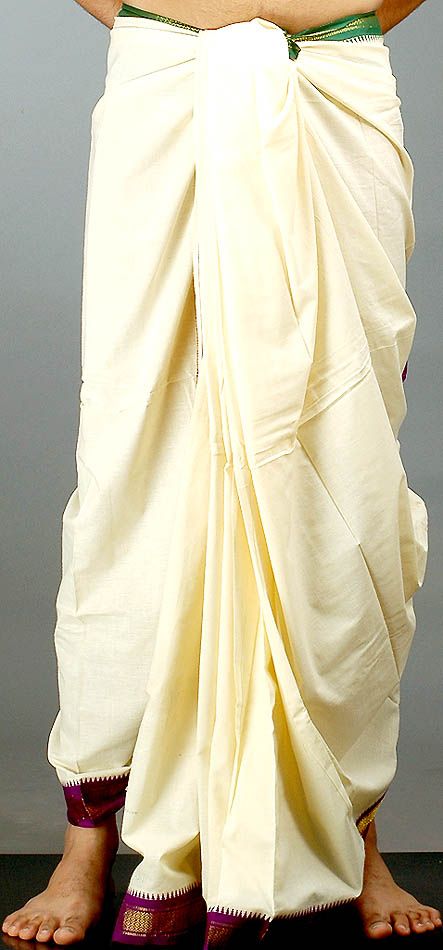 Of course, it is best if the seller shows you how to wear a sari when buying, so that later at home there will be no problems. It is possible that you won’t be able to wrap it the first time on your own and you will have to practice. But there are no unsolvable problems.
Of course, it is best if the seller shows you how to wear a sari when buying, so that later at home there will be no problems. It is possible that you won’t be able to wrap it the first time on your own and you will have to practice. But there are no unsolvable problems.
Shoes and accessories, with what and how to wear a sari
It is best to combine a sari with exquisite bracelets for hands and feet made of copper or bone. They will give the image a finished look and can add a certain charm. For a sari, not only the color and pattern of the fabric are important, but also the right shoes. It is best to prefer light ballet flats or flat sandals. They will be successfully combined with a classic sari.
Gujarati sari
This method is popular in Western India. This drapery is suitable for any occasion of life, both for every day and for a holiday.
Well suited to this style: glass bracelets and gold jewelry. Choli may not match the color of the sari, but it is better to choose a skirt in color.
Instructions:
- Tuck the sari into the skirt starting from the right side so that the end of the sari points to the right. Make 1 circle.
- Start draping the sari so that the folds point to the right. Tuck them into the skirt so that they are in the middle of the skirt.
- Take the other end of the sari and drape it. For convenience, you can fasten the drapery with clothespins.
- Wrap the draping of the sari around your back and drape the end over your right shoulder. So that the end of the sari is just below the level of the hips.
- Pin the drapery at the shoulder to the blouse.
- Take the end of the sari and tuck it under the skirt at the waist on the left hip side.
- You can wear bracelets. Saree is ready!
Rajrani style
Rajrani style is considered to be the royal style. A girl dressed in this style instills an element of grandeur due to the subtle combination of draperies and sari embroidered with rich decorations.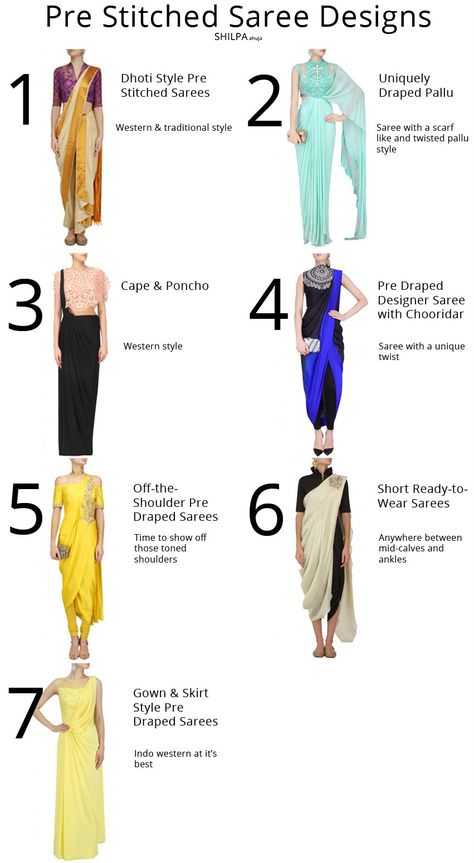
You will need:
- Ornate sari.
- Matching skirt for the sari.
- Choli.
- Jewelry such as bracelets, earrings and long beads.
- A pair of stylish shoes, preferably with heels.
- Several pins.
How to drape the fabric of the Rajrani sari:
- Take one end of the sari and carefully fold it into the skirt around the waist, starting from the right hip in front and ending, after the first circle, with the center of the waist in front.
- Drape the other end of the sari, you can use clothespins.
- Wrap the drapery over your back and drape it forward over your right shoulder, with the end slightly above your right knee. Pin the sari to the blouse.
- Take the untucked part of the sari and drape it, then tuck it into the skirt.
- Now take the edge of the sari, the one that was thrown over the right shoulder, and attach it to the left with a pin.
- You can now put on your jewelry.
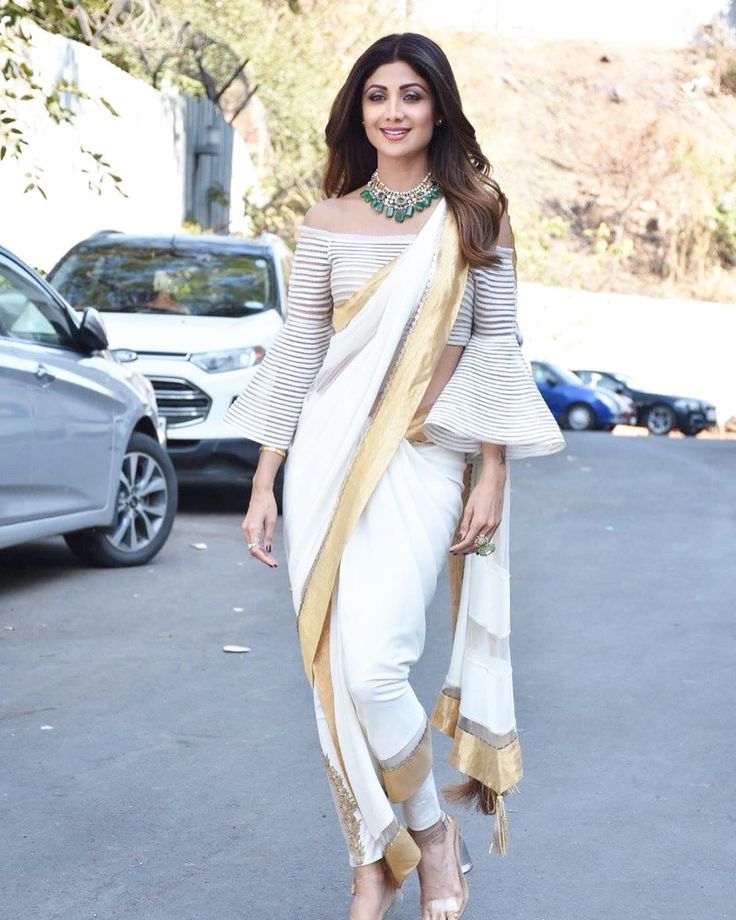
Another variant of the Indian costume
Choose satin, satin, chiffon, silk, thin cotton for a top if you want to emphasize lightness and femininity. Thicker fabrics do not hold the desired shape well. How to make an Indian sari for carnival? Sew a semi-sun skirt from crepe satin, sew the bottom and decorate the belt with a ribbon. Sew two petticoats from nylon with the same cut, which are ten centimeters longer than the satin tier.
Trim them with bias tape. Sew a blouse according to any top pattern, in which the bottom, sleeves and neck need to be processed in the same style. Sew a guipure veil on your head. You just sew a two-meter cut, gather it up and decorate it with a decorative flower.
The skirt can be sewn in a straight cut with side slits. Decorate the skirt, top and sari with sequins, braid. The organza sari in this case is short, like a veil, and serves as a headdress. By this type, you can sew a short straight sari.
For dancing, you can sew a skirt from wedges in two or three tiers. The underskirt can be transparent, but long. And the subsequent tiers are shorter, but made of satin fabric. On top you can tie a belt with coins. Instead of a skirt, sew bloomers (wide trousers, narrowed at the ankle).
The underskirt can be transparent, but long. And the subsequent tiers are shorter, but made of satin fabric. On top you can tie a belt with coins. Instead of a skirt, sew bloomers (wide trousers, narrowed at the ankle).
Gujarati style
Since time immemorial in the western part of India, the Gujarati style has been considered the most popular in putting on traditional attire.
Gujarati style
Its peculiarity lies in the fact that in this way you can drape the outfit, both for everyday wear and for special occasions, it all depends on the choice of fabric for the outfit.
Gujarati has long been a symbol and visiting card of India
The algorithm is as follows:
- The fabric is tucked into the skirt at one end, wrapped once around the waist.
- Several folds are folded in the front, pointing straight to the right. The folds are tucked in the middle over the edge of the skirt.
- The other end is draped and wrapped around the back.
 The free end of the canvas is thrown forward over the right shoulder, its length should be below the thigh.
The free end of the canvas is thrown forward over the right shoulder, its length should be below the thigh. - The end of the sari is tucked into the skirt at the left waist.
Modern Gujarati dress
To complement the oriental look, you can decorate the sari with a large brooch, wear large bracelets and earrings.
Gujarati style - abundance of jewelry
Having mastered the simple art of properly putting on the Indian national dress, you can create delightful and exotic looks. The reward will be an original, elegant and feminine outfit of an Indian beauty.
Putting on a sari
How to put on a sari
How to choose a scarf for a jacket
Only after choosing a suit, shirt, shoes, tie, you can start choosing a scarf. It is like a highlight, an addition, so it must be combined with the overall image. For those who have a lot of jackets of different colors, cuts, styles, you can choose any accessories that you like, most likely there will be a suit for it in a large wardrobe. If there are not so many jackets or they are of the same type, it is better to buy each scarf for a specific occasion.
An expensive suit does not go well with random accessories bought in a hurry in the first shop that comes across. The material, coloring, accurate processing of edges is important. Silk, velvet, gabardine, polyester, linen, suede, satin, cotton - any of these options is possible, the main thing is that it matches, but does not repeat the fabric of the jacket.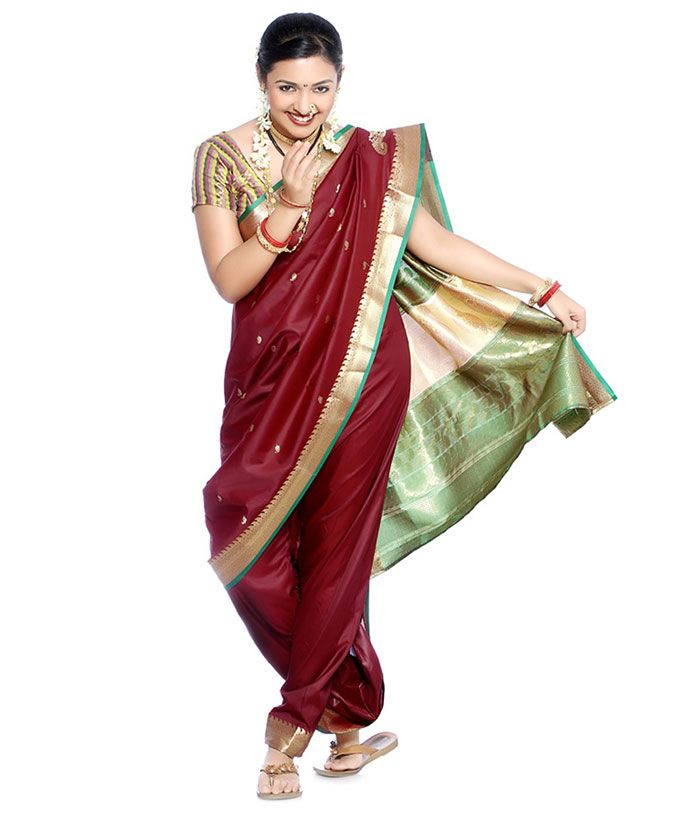 It is also worth remembering a tie, a pasha scarf is better combined with it, if they differ in texture - a matte scarf goes with a shiny tie and vice versa.
It is also worth remembering a tie, a pasha scarf is better combined with it, if they differ in texture - a matte scarf goes with a shiny tie and vice versa.
Choosing the right size
There is no perfect standard for everyone, different sizes are suitable for the same jacket, it all depends on the fabric, the way of laying, the width of the pocket. The denser the material, the less acceptable parameters are - linen, woolen, velvet, suede, there are 30x30 cm, 32x32 cm, 33x33 cm. Average sizes - 35x35 cm, 36x36 cm, 38x38 cm, good for gabardine, polyester, cotton. But silk, satin, from thin flowing fabrics, it is better to buy at least 40x40 cm, 45x45 cm.
Deviations from the accepted recommendations are possible, depending on the way of laying, it is important to remember that small scarves fall down during the day and get lost at the bottom of the pocket, while thick large ones stick out strongly and look untidy. On a note!. On a note!
Note!
Before buying, it is better to check the width of the pocket and try to fold in different ways.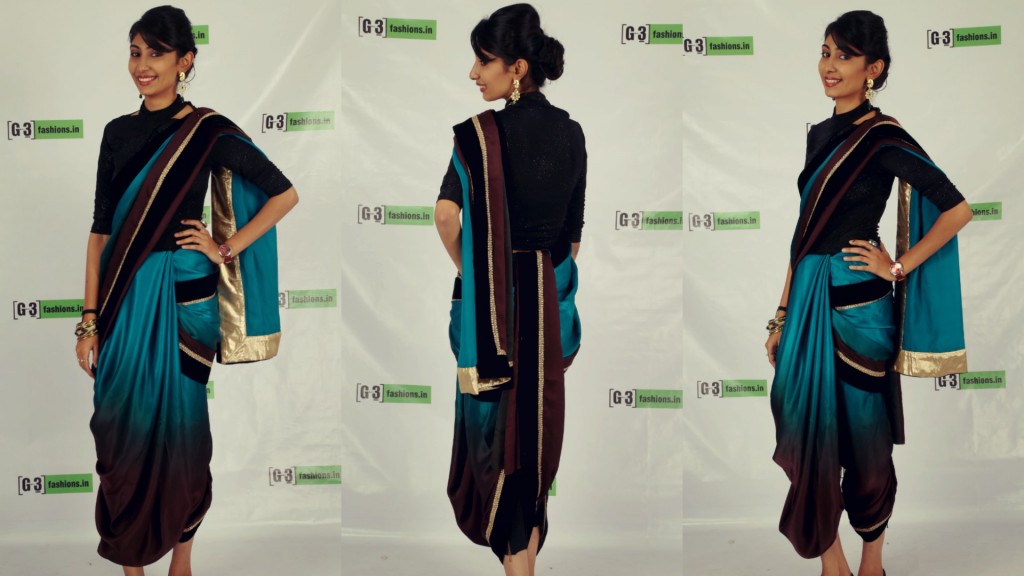 After that, the choice will be easier.
After that, the choice will be easier.
How to choose the right color
A strict business look does not imply complex patterns and floral ornaments. Usually, for such suits, one-color scarves are selected, which echo the tone of a jacket, shirt, or tie. They should not be exactly the same color (otherwise they will be “lost” against the general background), lighter or darker shades are acceptable. The best solution (“classic”, so to speak) is white, which goes well with any dark jacket.
Patterns, intricate ornaments, prints, polka dots, stripes - all this is acceptable for a sporty and casual style. It is more suitable for everyday wear and informal occasions. Such options are more often chosen by active, creative, courageous individuals, for whom individuality and their own style are important.
Indian costume - a tribute to centuries-old traditions
There are many national costumes in the world that reflect the traditional character and ethnic originality of this or that nation.
Probably one of the brightest and most unusual is the Indian costume. Despite the centuries-old influence of other ethnic groups and cultures, these clothes have retained all their national features. It combines all the best, it is comfortable, elegant and comfortable. Even in modern India, representatives of all walks of life prefer to spend all family celebrations, any holidays and official ceremonies in national clothes.
Men's Indian suit
The clothes of men in different parts of India are very different, but despite this, they follow the general principles: comfort, simplicity and convenience. Each nationality of this multinational country has its own characteristics and traditions of wearing clothes. Most poor men wear the so-called dhoti. This elaborately draped garment is a piece of rectangular fabric that is up to 5 meters long. It can be white or any other solid color. Dhoti is worn on the hips. In different parts of the country, this traditional costume has different names (“dhuti”, “veshti”, “laacha”, “mundu”).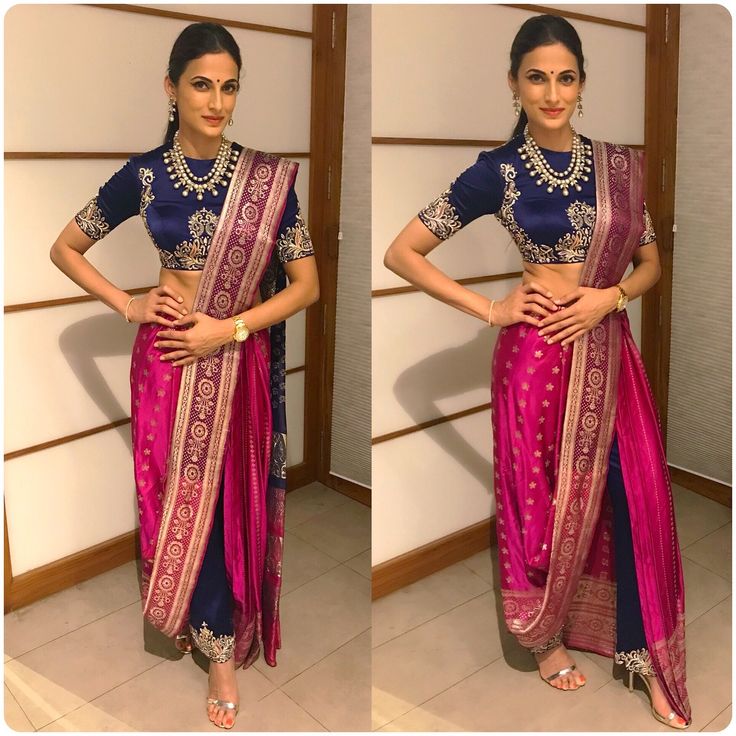 There are several ways to drape a loincloth. It does not start from the edges, but from the middle of the fabric. Most often, dhoti is worn with a kurta (long shirt) or with a shoulder cape - angavashtram. The kurta is most often knee length, although it can be shorter. Her neckline is on her chest. Most often it is decorated with embroidery. Many nationalities wear it with churidars - skinny pants or with shalvars (wide and loose trousers). In some parts of India, men wear a lungi, which is a 2 x 1.5 m strip of fabric sewn like a skirt. Such a long frock coat as shervani is also common in the country. Its length falls below the knees. Traditional clothing is made from silk, cotton, wool and khadi (a mixture of the above materials). They complement the national Indian costume with such headdresses as a turban (5 m long fabric skillfully wrapped around the head) and gandhi (a headdress in the form of a cap).
There are several ways to drape a loincloth. It does not start from the edges, but from the middle of the fabric. Most often, dhoti is worn with a kurta (long shirt) or with a shoulder cape - angavashtram. The kurta is most often knee length, although it can be shorter. Her neckline is on her chest. Most often it is decorated with embroidery. Many nationalities wear it with churidars - skinny pants or with shalvars (wide and loose trousers). In some parts of India, men wear a lungi, which is a 2 x 1.5 m strip of fabric sewn like a skirt. Such a long frock coat as shervani is also common in the country. Its length falls below the knees. Traditional clothing is made from silk, cotton, wool and khadi (a mixture of the above materials). They complement the national Indian costume with such headdresses as a turban (5 m long fabric skillfully wrapped around the head) and gandhi (a headdress in the form of a cap).
Women's Indian costume
The most feminine clothing known all over the world is the sari. Amazingly, this is a simple piece of fabric, 5-9 m long, skillfully wrapped around the body of the fair sex. Depending on who owns it, the sari can be woven from cotton or the finest silk. It can be decorated with a variety of patterns and plain, decorated with embroidery, gold threads, sequins, beads, sequins. They produce casual and festive saris. There are many ways to drape this garment, but the most common is when the fabric is tied around the waist, where numerous folds form. The end of the sari is thrown over the shoulder, covering the chest. These clothes are worn with a tight blouse (ravika, choli) and an underskirt. Very bright and elegant handmade wedding saris are the most expensive. Most often, their patterns never repeat. The color scheme of the sari is so diverse that it makes no sense to list the shades. Representatives of many nationalities of India wear shalwars and kameez. Shalwars are pants that are very wide at the top and narrowed at the bottom. Kameez is an elongated tunic with side slits.
Amazingly, this is a simple piece of fabric, 5-9 m long, skillfully wrapped around the body of the fair sex. Depending on who owns it, the sari can be woven from cotton or the finest silk. It can be decorated with a variety of patterns and plain, decorated with embroidery, gold threads, sequins, beads, sequins. They produce casual and festive saris. There are many ways to drape this garment, but the most common is when the fabric is tied around the waist, where numerous folds form. The end of the sari is thrown over the shoulder, covering the chest. These clothes are worn with a tight blouse (ravika, choli) and an underskirt. Very bright and elegant handmade wedding saris are the most expensive. Most often, their patterns never repeat. The color scheme of the sari is so diverse that it makes no sense to list the shades. Representatives of many nationalities of India wear shalwars and kameez. Shalwars are pants that are very wide at the top and narrowed at the bottom. Kameez is an elongated tunic with side slits. This dress is very comfortable and beautiful. On the bottom of the pants and tunic, these clothes are trimmed with hand embroidery. Cutouts are also decorated in a variety of ways. This traditional costume is complemented by a wide and long scarf (chunni or dupatta).
This dress is very comfortable and beautiful. On the bottom of the pants and tunic, these clothes are trimmed with hand embroidery. Cutouts are also decorated in a variety of ways. This traditional costume is complemented by a wide and long scarf (chunni or dupatta).
In some areas, the so-called lenga choli is worn, which is a suit of a blouse (choli), skirt (lenga) and cape.
Indian costume accessories
It is almost impossible to imagine an Indian woman without elegant gold jewelry. Among the wealthy population of the country, preference is given to diamonds, rubies, pearls, emeralds and other precious stones in gold and platinum
Also much attention is paid to shoes. Many models are finished with intricate embroidery and even precious stones
fb.ru
Features of the national Indian costume
All the national clothes of India, with all its diversity, can be divided into two types - sewn and unsewn. Unsewn clothing is more ancient. Usually it is a sheet of fabric that is draped around the body in a special way. According to tradition, divine services and ceremonies are held in unsewn clothes. The oldest example is the dhoti. This is a straight strip of fabric, often one-color, which is draped around the legs. The length of the dhoti depends on the social status of the person: the peasants have short dhoti and tightly fit the hips, and the upper classes wear loose long dhoti. Everyday dhotis are made of cotton or jute fabric, and festive ones are made of silk, decorated with a gold border. Only monks are allowed to wear a saffron or red dhoti.
Usually it is a sheet of fabric that is draped around the body in a special way. According to tradition, divine services and ceremonies are held in unsewn clothes. The oldest example is the dhoti. This is a straight strip of fabric, often one-color, which is draped around the legs. The length of the dhoti depends on the social status of the person: the peasants have short dhoti and tightly fit the hips, and the upper classes wear loose long dhoti. Everyday dhotis are made of cotton or jute fabric, and festive ones are made of silk, decorated with a gold border. Only monks are allowed to wear a saffron or red dhoti.
Dhoti is worn by men and women. True, recently women still prefer saris. And dhotis are replaced by ordinary European trousers. The dhoti was often complemented by another piece of cloth, used as a cape, which covered the upper body. Nowadays, it has been replaced by a sewn shirt - kurta, and the cape is used only as an ornament. Kurts are made from different fabrics, everyday and festive. In addition, kurta is worn not only with dhoti, but also over pajama.
In addition, kurta is worn not only with dhoti, but also over pajama.
Sari is the oldest example of women's unsewn clothing in India. It is a sari piece of fabric, 5 to 9 meters long and 1.2 meters wide. The sari is draped around the body in a special way. Sari is made from various fabrics, colorful and plain, from cotton and silk, from artificial fabrics. The festive sari also has a gold or silver border, and the edge is decorated with drawings and embroidery.
The sari is not worn over the naked body, but over an underskirt that matches the color of the sari. So
saris are worn with a short blouse (choli) or a long shirt - kurti. The choli is made from the same fabric as the sari.
There are different ways of wearing a sari in different parts of India. For example, the classic version - the fabric is draped around the hips in the form of a skirt, and the edge of the sari is wrapped around the body once and thrown over the left shoulder. In southern India, one end of the sari is passed between the legs and fastened at the back of the belt, while the other end covers the upper body and head. But saris are worn mainly by married women.
But saris are worn mainly by married women.
If we talk about tailored women's clothing, then one such example is a set of a wide skirt (lehenga), choli, cape (dupatta). This set is called lehenga-choli.
Do-it-yourself Russian folk costume
Another option is trousers and a shirt, which are sometimes complemented with a cape-scarf. The female version of the set is called shalwar-kameez and consists of a simple or embroidered shirt, trousers (shalwar), the style of which fluctuates very much, and a cape (dupatta). These are the clothes of Sikh women, unmarried girls, schoolgirls and students.
The male version of the set is called kurta pajama. It consists of a simple or festive shirt (kurta) and pants (pajama). The set can also be complemented with a light scarf. Pants are usually quite wide. But in big cities, traditional trousers are gradually being replaced by European trousers.
Another common type of men's clothing is lungi. Lungi is a loose loincloth made of one piece of cloth or dhoti, but not passed between the legs. Lungs are colored and plain, they are made of cotton, although there are synthetic and silk ones. Lungi are worn both in villages and in cities.
Lungs are colored and plain, they are made of cotton, although there are synthetic and silk ones. Lungi are worn both in villages and in cities.
Sewing chudidar, choli
Before sewing an Indian sari, you need to know what to wear it with. Young girls prefer a tunic with chudidar (these are pants that taper from the knee). In fact, they resemble jeans with narrow legs, only there are folds at the waist (almost like riding breeches). Indian tailors cut two parts of the right and left halves of the chudidar at once.
This requires a large but less time consuming sewing. Beginning seamstresses can find patterns of trousers with a narrowed leg at the ankle. You just need to change the pattern a little, increasing it by the size of the folds and sew it.
Choli is a blouse with long or short sleeves. In terms of patterns, it is similar to the shirt style, that is, the sleeve has a large length and a small height of the rim. For a top, choose stretchy fabrics or thin cotton. Measurements of the chest, sleeves, shoulders, length of the product, waist will be required. Although there are short tops that end under the bust.
Measurements of the chest, sleeves, shoulders, length of the product, waist will be required. Although there are short tops that end under the bust.
Indian tailors offer patterns in a variety of shapes and cuts. They differ from the simplified patterns of tops, so the product with a deep cut on the back fits perfectly.
Which scarf to choose
When choosing a chest accessory, many aspects are important. So, you should not purchase a product from the material that is used to sew a tie. For example, a matte tie will look great in tandem with a satin or silk pocket handkerchief
For example, a matte tie will look great in tandem with a satin or silk pocket handkerchief
So, you should not purchase a product from the material that is used to sew the tie. For example, a matte tie will look great in tandem with a satin or silk pocket square.
Use a pouch or pocket square for a stylish and dramatic look.
The most common fabrics for pashé are cotton and silk. Often there are costume paraphernalia sewn from suede or linen.
Often there are costume paraphernalia sewn from suede or linen.
The color of the handkerchief is also important. Pasha is selected in the same color scheme as the suit / jacket. It is not possible to choose an accessory tone on tone with clothes
Only small matches of the shade of the pocket square with the prints of the tie are allowed
You cannot choose an accessory to match the clothes. Only small coincidences of the shade of the pocket square with the prints of the tie are allowed.
Business men prefer to wear these handkerchiefs in the pocket of a jacket or vest.
The size of the scarf is important. Usually the latter is selected in accordance with:
- the size of the pocket on a tuxedo or jacket;
- with the chosen installation method.
Popular sizes are:
- 40x40 cm;
- 30x30 cm.
The handkerchief tucked into the breast pocket is a handy detail that complements the formal look.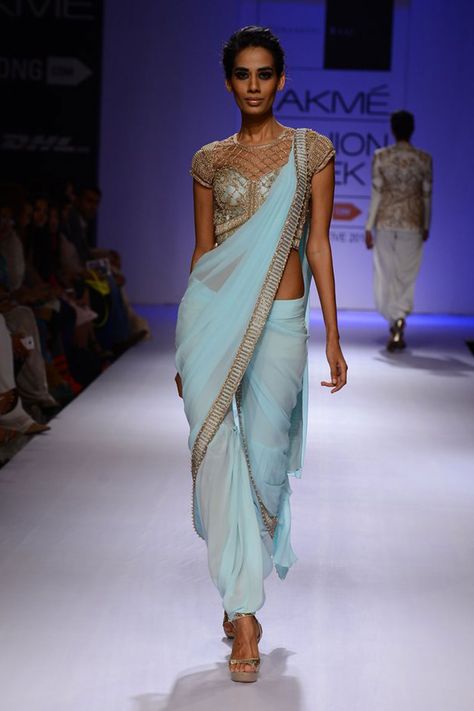
If necessary, also available in other dimensions.
How are saris worn?
There are many different ways to wear a sari, there are about nineteen types of drapery. How Indian women drape fabric around their body depends on the status of the woman, her age, caste and place of residence. By the way a woman wears a sari, one could easily guess from which region of India she was. We invite you to learn and watch a video on how to put it on.
Consider one of the most common options, which is called nivi. It is customary to start draping a sari from right to left, making one turn in a circle.
- Take the inside edge of the sari and tuck it under the waistband of the petticoat, adjusting the length of the sari from the floor from right to left.
- Wrap the loose end of the sari from the back side, tucking the fabric evenly to the waistband of the petticoat.
- Next, starting from the right side, make 7-10 folds of 5 or 12 centimeters, at your discretion.
 Folds are necessary for freedom of movement. They should be evenly distributed in length and width.
Folds are necessary for freedom of movement. They should be evenly distributed in length and width. - Place the gathered pleats behind the skirt. Once again, wrap the sari around you covering your back and chest, and then throw the free edge over your shoulder, thereby creating a pallu.
- If everything is properly draped, the pallu should be below the elbow, but not longer than the arm. And in the final part, so that it does not fall off, it must be attached to the choli T-shirt with special clips or hairpins so as not to injure the fabric.
Done! Now you own one of the ways how to drape a saree!
Washing a sari in India
A woman dressed in a sari, by her very appearance, sets her up for a respectful attitude towards her, as to the better half of humanity, automatically making her more feminine and attractive than women in jeans or modern clothes.
Surprisingly, this most ancient outfit is still independent of fashion trends and most Indian women still prefer to wear saris.
An outfit that, with its diversity, emphasizes the individuality in every woman, revealing her true beauty, her feminine essence. Try and you put on this magic of ancient attire. Be beautiful and feminine!
Traditional men's clothing in India
Mahatma Gandhi - Brief biography
The whole truth about castes in India
Indira Gandhi: Brief Biography
Barners and merchants - Vayshey
000 9000 9000 9000High Caste Indian Brahmin Priest
About this Article
Contributor(s):
wikiHow Staff Editor
This article was written by our experienced team of editors and researchers who checked it for accuracy and completeness. wikiHow carefully monitors the work of the editors to ensure that each article meets our high quality standards. Number of views of this article: 33
Sari - dress from India
Photo: Shutterstock
Indian costume is not only part of the ritual and history of the country, it is an important distinguishing feature. And it’s not only about the necessary differences in caste (by the way, the division into castes is still strong in India), by the costume, or rather, its color and elements, you can determine which region of the country a person is from, which village he is from. It is an honor to wear national clothes, to have a sari in the family means to live in abundance.
And it’s not only about the necessary differences in caste (by the way, the division into castes is still strong in India), by the costume, or rather, its color and elements, you can determine which region of the country a person is from, which village he is from. It is an honor to wear national clothes, to have a sari in the family means to live in abundance.
Indian clothing is always a celebration of color and comfort. Perhaps, in no other culture of the world do they care about the convenience of clothing as much as in India. And this is understandable: the humid and hot subtropical climate obliges to things that are simple in cut and wide in silhouette. Almost all products are multi-layered, made of thin natural fabric with a lot of smells and wraps. In general, Indian draperies are unique, part of the style, it is impossible to repeat the addition of a sari or dhoti without special preparation, it seems that they are made from a huge piece of matter.
Types of Indian costume
It is believed that in India there are five basic costumes, three for men and two for women:
- dhoti,
- kurta,
- shervani - male,
- sari, female.
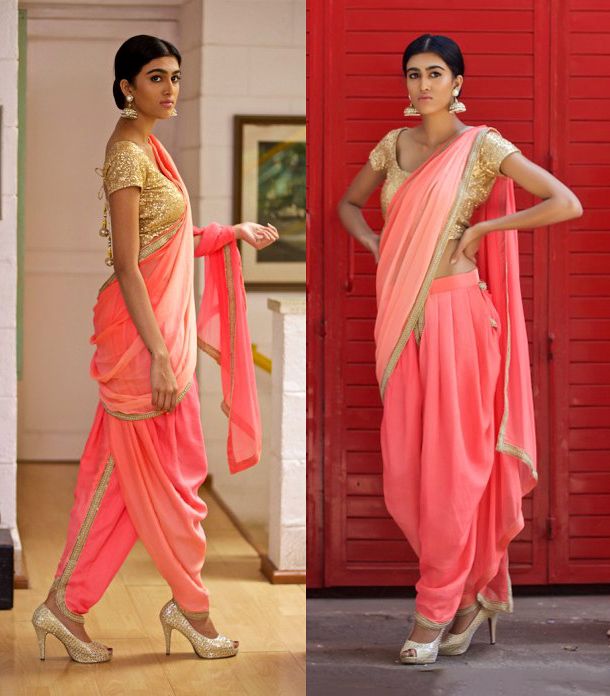
Dhoti is a formal version of a men's loincloth over 5 meters long. The fabric really does not have any cut, it is an ordinary rectangular cut of white color. To tie a dhoti, you need to start draping from the middle of the canvas. You need to tie the two upper edges on the belt in front into a knot, wrap the remaining two around the left and right legs, respectively, tucking the ends into the belt. The rest is a matter of technique. From the thickness of the fabric you need to create a "tulip", a characteristic pattern of these "pants".
School uniform: robes, saris and short skirts
Dhotis and shervanis are worn with a turban. Different villages in India have different turbans, which also speak of a person's social affiliation and even his age. Usually kurta is sewn to knee length. Wear it with tight white trousers.
Shervani - a luxurious men's outfit of a frock coat and trousers. Such a robe is very expensive in India, and only really rich families can afford it. Shervanis are worn to celebrations, usually with a turban and a national scarf.
Shervanis are worn to celebrations, usually with a turban and a national scarf.
Women's outfits
The most famous outfit of an Indian woman is, of course, the sari. The traditional sari consists of three elements: a T-shirt, a skirt and the actual sari, which can be up to 20 meters long, although it is most often limited to 9.
All the splendor of India is expressed in the sari, the poets wrote. This is the spirit of the country, its mood. Wearing a sari is not a cheap pleasure, only natural, very thin fabrics are used for tailoring, often with hand embroidery, gold threads. Saris are prepared for girls from birth as a dowry.
An open body is just as forbidden in India as it is in Islamic countries. The famous open belly outfits - langa choli - are part of the dance costume. You can wear it only among your own
Putting on a sari is easier than it seems. The cloth must be lowered behind the back almost to the floor and wrapped around the body so that the fabric comes out from under the arm to the opposite shoulder.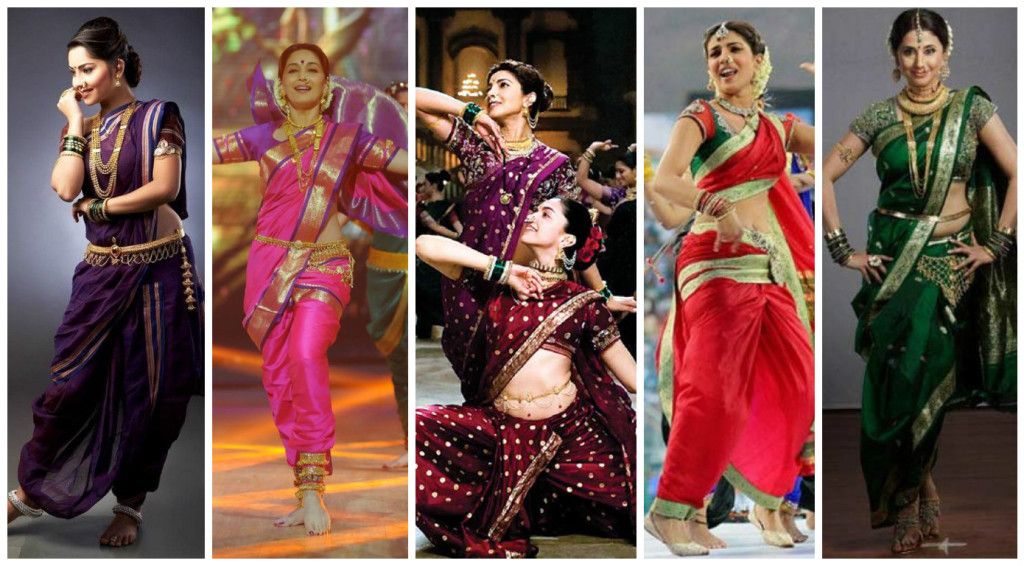 The number of turns depends on the fabric and the occasion on which the sari is worn. In everyday life, there is only one turn. The free end - pallu - is usually lowered in front.
The number of turns depends on the fabric and the occasion on which the sari is worn. In everyday life, there is only one turn. The free end - pallu - is usually lowered in front.
The simplicity and beauty of saris have made them a part of New Year's carnivals all over the world. Sewing a good sari as a New Year's costume is easy, especially since the fabric panel provides room for imagination and room for decorations.
Shalwar kameez is a kurta for women. This everyday outfit is simple, but very beautiful: a combination of wide trousers with an elastic band and an elongated shirt. The homeland of this attire is Afghanistan, but it received true recognition in India.
Also interesting to read: how to remove smell from clothes?
Sari fashionable Indian women's clothing
www.wday.ru
Kalpana Shah's method
| Take the end of the sari and place it on the right side of the thigh to the waist, so that the hem is 5 cm above the floor. | Tuck the sari into the front of the skirt. | Continue tucking the sari into the back of the skirt until you have made a full circle. |
| Fold the sari into one large pleat at arm's length from the waist as shown. | Tuck the other end into the skirt to form a loose loop. Loosely wrap the saree around your body. | Hold both ends of the hem of the sari in your hands in front of you. |
| Begin to drape about 15 cm wide. | You should have 4.5 full pleats. For convenience, you can fasten the folds with clothespins. | |
| The end of the sari should be below the knees in the back. | Pin the sari drape to the shoulder choli. | Now return to the loose fold that was left on the belt. |
| Start draping the pleats with your left hand, supporting them with your right. | Then tuck the drapery into the skirt. | Align the drapery. |
| Drape just below the navel. | This is what the drapery looks like from the back. | The end result! |
At first, it may seem difficult, but once you figure it out, you will learn how to tie a sari very quickly. Let's look at some more ways to tie and wear an Indian sari.
Nivi style, this is one of the most popular types of saree draping in India. This style originates in the state of Andhra Pradesh. Until now, locals prefer to wear saris in this way, and this is not surprising, since this style of drapery is a cultural heritage of India. Nivi style is suitable for all occasions.
Instructions:
Tuck one end of the sari into the skirt and wrap the sari around the waist.
Make sure that the distance from the floor and the sari is 5 cm.
Take the other end of the sari and drape it into 6-7 full folds.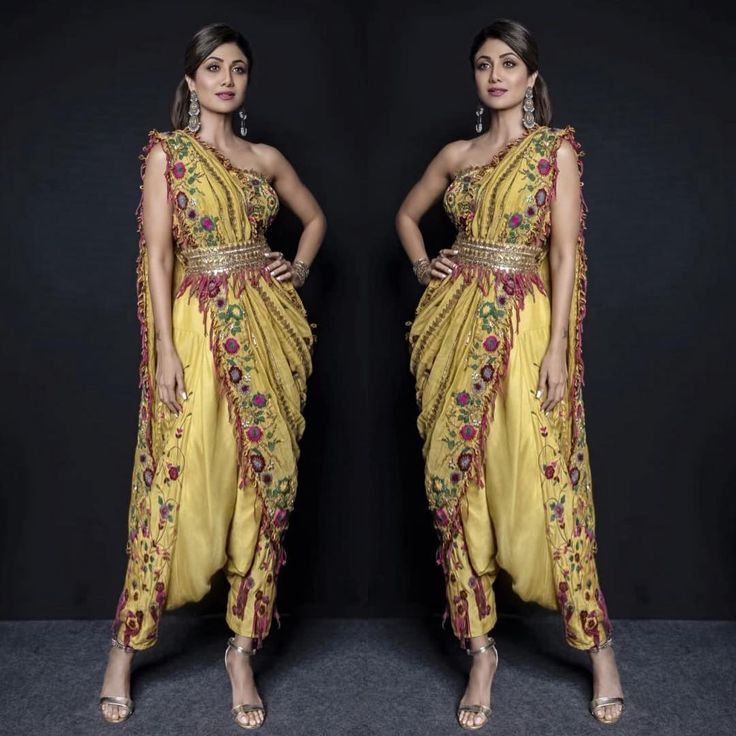
Fasten the folds so that the length is enough for the entire back to above the knees.
Throw the drapery over the left shoulder and pin the sari to the inside of the choli.
Now focus on the rest of the undraped sari. Put the top edge on the left into the skirt on the right side.
Drape the rest of the fabric and tie it behind the skirt also on the right side
Then you can fasten the drapery to the skirt from the wrong side with a pin, at a distance above the right knee, so that the drapery does not fall apart when walking.
The Bengali style sari looks chic with intricate borders and vibrant colors. This style is chosen for large events.
To complete the style you will need:
- White sari with red border.
- Blouse with short puff sleeves.
- Red and white bracelets.
- Red round bindi.
- Heeled shoes.
- Pins.
- Bell keyring.
- Earrings, preferably round and large.

Bengali Draping Method
- Start tucking the sari into the skirt starting from the right side so that the end of the sari points to the right. Do 1.5 circles.
- Then fold in the opposite direction, i.e. from left to right. Repeat this operation 2 times.
- Take the other end of the sari and drape it.
- Throw the drapery over the left shoulder.
- Remove the tip of the sari and put the bell on it.
- Throw the end of the sari with the bell over your right shoulder.
| Saree - Traditional women's clothing in the Indian subcontinent, which is a piece of cloth length from 4.
Sari is believed to be - The most ancient women's clothing. The history of Indian clothing goes deep rooted in the history of the Indus Valley Civilization which flourished 2800-1800 BC in the territory of modern India (Gujarat, Haryana and Rajasthan) and Pakistan (provinces of Sindh and Punjab). Earliest famous image of a sari - a statue of a priest of the Indus Valley, dressed in draped fabric. From such written sources as "Ramayana" and "Mahabharata" it is known that the daily costume of both men and women consisted of a dhoti or lungi (sarong), which draped the legs, and covered the shoulders or thrown over the head. One-piece, unsewn clothes were worn at the beginning of this era, in the form of a skirt with pleats in front, wrapped around the hips. With choli, or without it - when the blouse was replaced by a cape dupatta. Most of the time she just lashed out. on the chest, and both of its free ends lay on the shoulders and behind the back. |


 5 to 9 meters (sometimes up to 12), width up to 1.2 meters, special wrapped around the body. A border can pass along the entire fabric (pattern along the bottom or bottom and top edge, painted, embroidered or just sewn on tape). The sari is worn with a blouse known as a choli or ravika, and petticoat (pavada/pavadai in the south, and shaya in eastern India). AT traditional India, the material from which the sari is made depended on the social and the financial situation of a woman, but the very way to wear it was the same for this locality.
5 to 9 meters (sometimes up to 12), width up to 1.2 meters, special wrapped around the body. A border can pass along the entire fabric (pattern along the bottom or bottom and top edge, painted, embroidered or just sewn on tape). The sari is worn with a blouse known as a choli or ravika, and petticoat (pavada/pavadai in the south, and shaya in eastern India). AT traditional India, the material from which the sari is made depended on the social and the financial situation of a woman, but the very way to wear it was the same for this locality.  Some costume historians believe that the male dhoti (the oldest Indian draped garment) preceded the sari. Until the 14th century The dhoti was worn by both men and women. Sculptures of Gandhara (I-VI century n. BC), depict goddesses and dancers dressed in the likeness of a loincloth, which falls freely covering the legs, and is laid in folds in front. Above waist body remains naked.
Some costume historians believe that the male dhoti (the oldest Indian draped garment) preceded the sari. Until the 14th century The dhoti was worn by both men and women. Sculptures of Gandhara (I-VI century n. BC), depict goddesses and dancers dressed in the likeness of a loincloth, which falls freely covering the legs, and is laid in folds in front. Above waist body remains naked. 